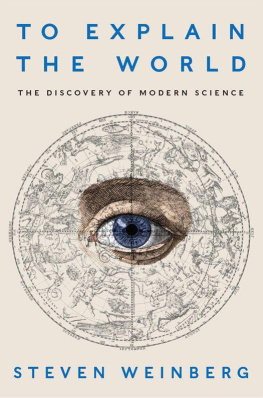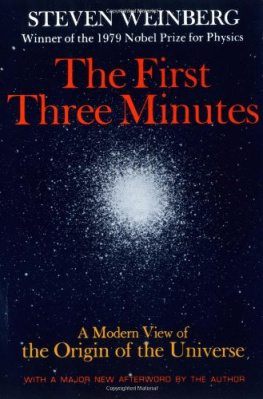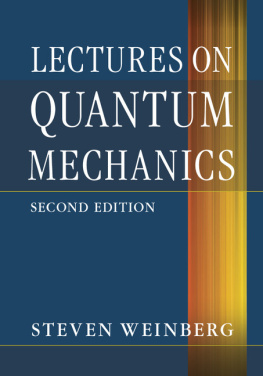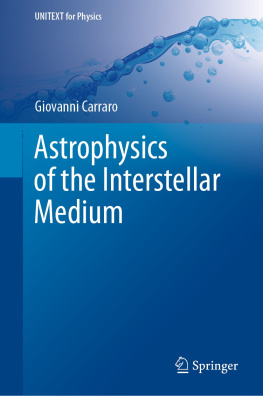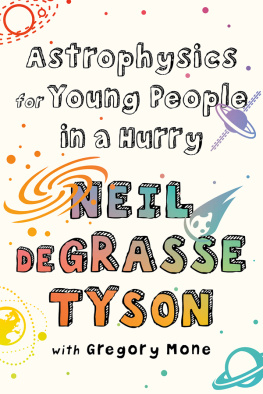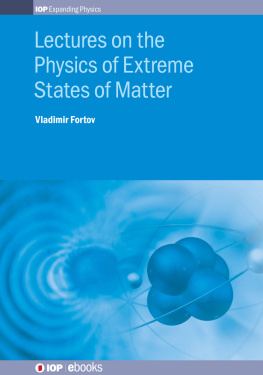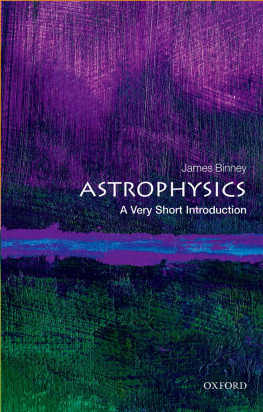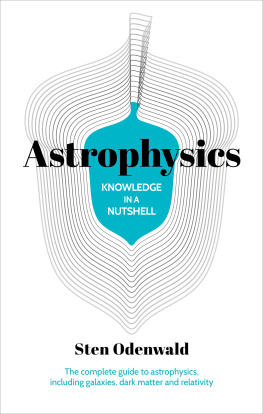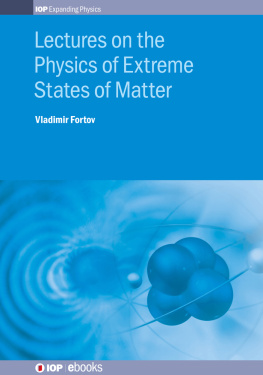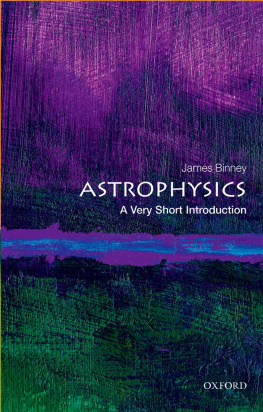Contents
Guide
Pages
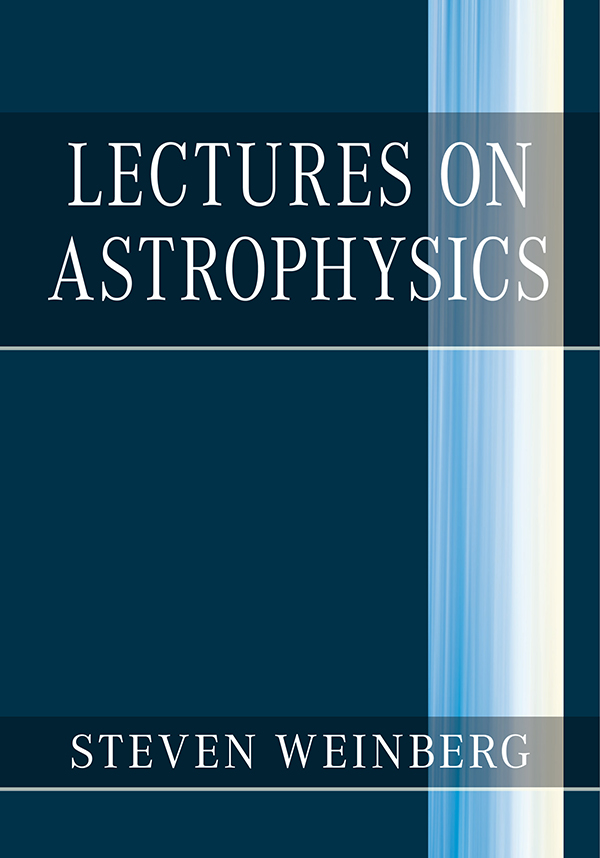
Lectures on Astrophysics
Lectures on Astrophysics provides an account of classic and contemporary aspects of astrophysics, with an emphasis on analytic calculations and physical understanding. It introduces fundamental topics in astrophysics, including the properties of single and binary stars, the phenomena associated with interstellar matter, and the structure of galaxies. Nobel Laureate Steven Weinberg combines exceptional physical insight with his gift for clear exposition to cover exciting recent developments and new results. Emphasizing theoretical results, and explaining their derivation and application, this book provides an invaluable resource for physics and astronomy students and researchers.
STEVEN WEINBERG is a Professor of Physics and Astronomy at the University of Texas at Austin. His research has covered a broad range of topics in quantum field theory, elementary particle physics, and cosmology, and he has been honored with numerous awards, including the Nobel Prize in Physics, the National Medal of Science, and the Heinemann Prize in Mathematical Physics. The American Philosophical Society awarded him the Benjamin Franklin medal, with a citation that said he is considered by many to be the preeminent theoretical physicist alive in the world today. He is a member of several academies in the USA and abroad, including the US National Academy of Sciences and Britains Royal Society. He has written several highly regarded books, including Gravitation and Cosmology (Wiley, 1972), a three-volume work The Quantum Theory of Fields (CUP, 2005), Cosmology (OUP, 2008), and Lectures on Quantum Mechanics (CUP, 2nd edn., 2015).
Lectures on Astrophysics
Steven Weinberg
University of Texas, Austin


University Printing House, Cambridge CB2 8BS, United Kingdom
One Liberty Plaza, 20th Floor, New York, NY 10006, USA
477 Williamstown Road, Port Melbourne, VIC 3207, Australia
314321, 3rd Floor, Plot 3, Splendor Forum, Jasola District Centre, New Delhi 110025, India
79 Anson Road, #0604/06, Singapore 079906
Cambridge University Press is part of the University of Cambridge.
It furthers the Universitys mission by disseminating knowledge in the pursuit of education, learning, and research at the highest international levels of excellence.
www.cambridge.org
Information on this title: www.cambridge.org/9781108415071
DOI: 10.1017/9781108227445
Cambridge University Press 2020
This publication is in copyright. Subject to statutory exception and to the provisions of relevant collective licensing agreements, no reproduction of any part may take place without the written permission of Cambridge University Press.
First published 2020
Printed in the United Kingdom by TJ International Ltd, Padstow, Cornwall
A catalogue record for this publication is available from the British Library.
Library of Congress Cataloging-in-Publication Data
Names: Weinberg, Steven, 1933 author.
Title: Lectures on astrophysics / Steven Weinberg (University of Texas, Austin).
Description: Cambridge ; New York, NY : Cambridge University Press, 2019. |
Includes bibliographical references.
Identifiers: LCCN 2019021306 | ISBN 9781108415071 (hardback)
Subjects: LCSH: Astrophysics.
Classification: LCC QB461 .W375 2019 | DDC 523.01dc23
LC record available at https://lccn.loc.gov/2019021306
ISBN 978-1-108-41507-1 Hardback
Cambridge University Press has no responsibility for the persistence or accuracy of URLs for external or third-party internet websites referred to in this publication and does not guarantee that any content on such websites is, or will remain, accurate or appropriate.
For Louise, Elizabeth, and Gabrielle
Preface
This book grew out of the lecture notes for a course on astrophysics that I gave in Austin in the spring term of 2016 and again in the fall term of 2017. In contrast to other courses I have given over the years on general relativity and cosmology, in this course I wanted to provide an introduction to the more traditional nuts and bolts aspects of astrophysics: the properties of single and binary stars, the phenomena associated with interstellar matter, and the structure of galaxies.
This is not a comprehensive account of astrophysics and its applications to astronomy. That would not be possible in a single volume. Indeed, many of the individual topics treated in single sections of this book have been the subjects of massive monographs, on which I have heavily relied, especially for numerical results and summaries of astronomical data. (Some of these books are listed among others in bibliographies for each chapter.) Instead, I here offer a short course, a collection of astrophysical calculations that can be done simply and analytically, without recourse to computers, and yet are relevant to the real world.
In many of the treatises and review articles on astrophysics that I have consulted, where numerical computations have not entirely replaced analysis, formulas are given without presenting derivations or even references. (Sometimes they are wrong.) This book is intended for those who care about the rationale of astrophysical formulas as well as about their applications. So where I can I give derivations of all the formulas I use, or if that would take me too far from my subject I give a reference where the derivation can be found.
There are several results presented here that I have not seen elsewhere. Some of them may be new, including a general formula for the matrix element for bremsstrahlung and inverse bremsstrahlung, a formula for the volume of the Roche lobe when one star in a binary is much more massive than the other, and an estimate of the ratio of the central temperature and effective surface temperature of a main sequence star in terms of the centers optical depth.
This is not intended as a treatise on general relativity or cosmology. Having written such books in the past, I had no wish now to write another one. But it would have been impossible to leave out general relativity altogether. For one thing, that would have precluded any serious discussion of the instability of white dwarfs, neutron stars, and supermassive stars. It would have ruled out an estimate of energy production in accretion disks around massive black holes. Above all, I could hardly leave out any discussion of the exciting new field of gravitational wave astronomy, which begin in late 2015 with the discovery by the Laser Interferometric Gravitational Wave Observatory of gravitational waves from distant coalescing black holes.
So I have compromised. In those sections (not many) where general relativity has to be used, brief appendices provide a compact account of relevant aspects of the subject. Derivations are generally abbreviated or skipped where they were given in my 1972 treatise, Gravitation and Cosmology, and where topics were not covered there, I take this opportunity to bring that book up to date. Likewise, where I need to use quantum mechanics, for instance to calculate Coulomb barriers in the section on nuclear energy generation or inverse bremsstrahlung in the section on opacity, the calculations are presented in appendices to those sections. I hope that with these appendices, the material presented in this book should be accessible to anyone with a good undergraduate background in classical physics and its mathematical methods.


